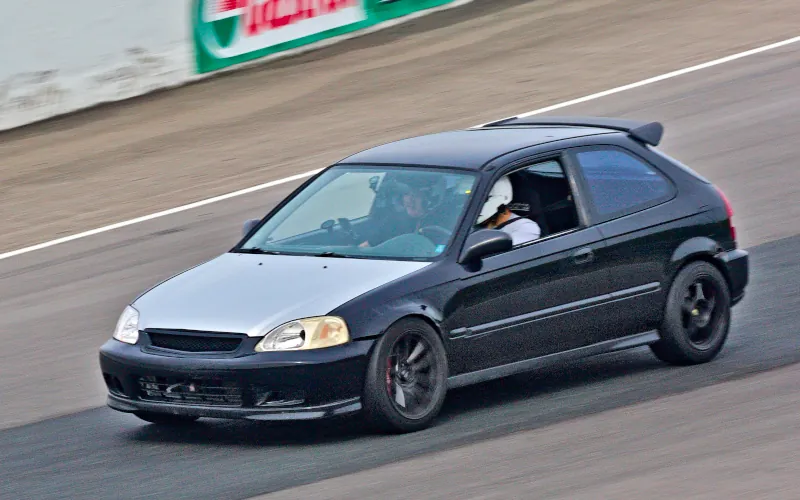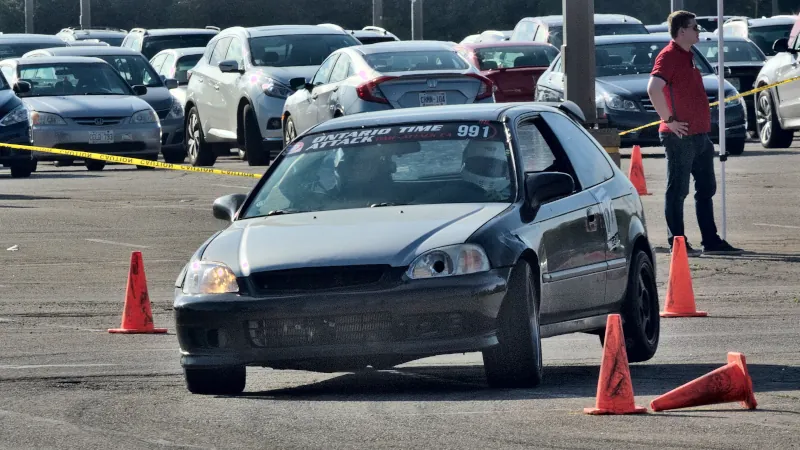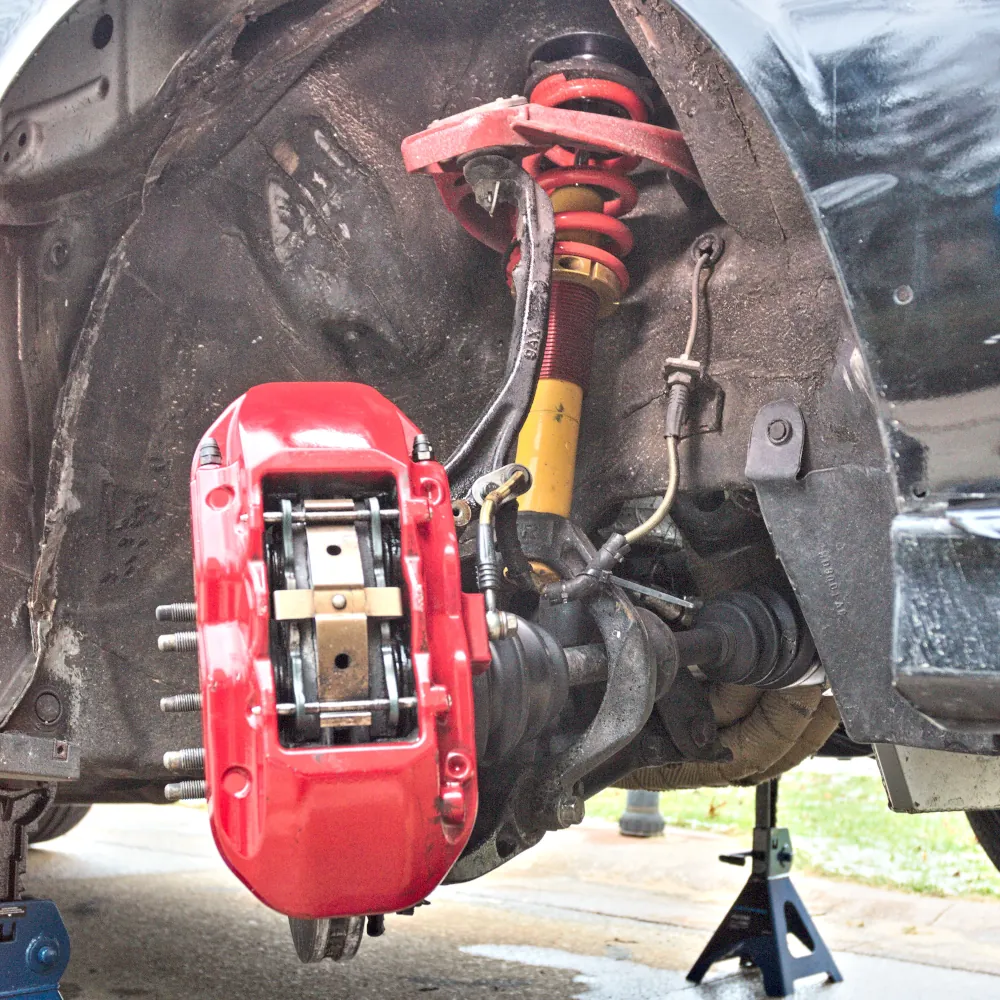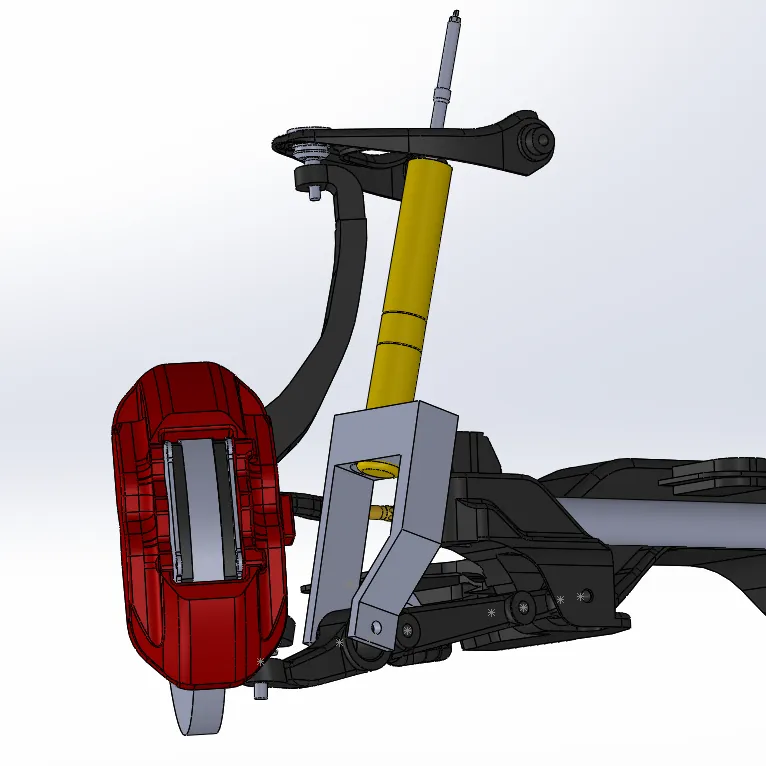Introduction to front suspension kinematics of a Honda Civic EK Hatchback

Our aim at Formula Delta is to build an efficient time attack vehicle through the application of our engineering expertise in vehicle dynamics. We believe that the key to success is to gain a deep understanding of the underlying performance characteristics of the vehicle and to adjust to both car and driver to take full advantage of these. Suspension geometry and kinematic analysis is an important tool we use to achieve these goals.
Kinematics refers to the study of motion without considering the forces involved. In the context of vehicle dynamics, the study of suspension kinematics is crucial because it has a direct impact on the performance of the tires. However, conducting such analysis outside the industry can be challenging as vehicle manufacturers do not make the suspension geometry or kinematic data of their road vehicles publicly available, meaning that reverse engineering is often required.
In this article, we will share our process of analyzing the front suspension of the Formula Delta EK20R to determine its kinematic performance. We will explain how we obtained the suspension points through reverse engineering and describe the workflow we developed to analyze the suspension geometry.
This project marks the culmination of three years of development at Formula Delta and demonstrates our approach to vehicle development, which we believe is applicable at all levels of motorsport. I am thrilled to finally share the results of our hard work and dedication in this suspension kinematics analysis.
Acknowledgements
I would like to thank the following contributors for making this project possible.
-
Jay Thornton from Race3 Motorsport. After seeing one of our Instagram posts showcasing our preliminary effort in reverse engineering the front upright, Jay reached out to us and offered to 3D scan the part at his shop in Niagara Falls, ON. The resulting 3D scans proved to be invaluable for our reverse engineering efforts. We would not have been able to achieve the same level of success without Jay’s contributions. To learn more about Race3 Motorsports, please visit their website at www.race3.ca, or follow them on Facebook and Instagram at @race3_motorsports.
-
Ping Cheng Zhang from Formula Delta. Ping has been an instrumental part of this project from the start. Despite a busy time attack season, Ping took every opportunity to reverse-engineer parts of the EK20R. This involved diligently measuring physical components and ensuring that their digital representation were accurate. Through several rounds of discussion and collaboration, we were able to extract a useful set of suspension points, laying the foundation for a kinematic analysis of the front suspension of the Formula Delta EK20R.
Kinematic analysis motivation
One aspect of vehicle dynamics engineering is to improve the performance of a vehicle by maximizing the available grip for the driver. This grip is generated by operating the tire within a specific window where it performs best. The suspension and chassis play a crucial role in controlling the tire. Understanding the kinematics of the suspension helps us to evaluate a vehicle’s ability to control the tire and therefore understand the vehicle’s performance potential.

At Formula Delta, we have observed two contrasting approaches to vehicle setup in our club-level work:
- Extensive vehicle modification to improve performance
- Extensive driver training to improve performance
However, these two approaches should not be considered mutually exclusive. By carefully understanding the underlying performance characteristics of the vehicle and making informed modifications, we can achieve high performance without over-modifying the car. The conventional development process often involves a trial-and-error approach, which can be time-consuming and produce disappointing results. Through systematic analysis, such as kinematics analysis, we can streamline the process and achieve efficient and effective performance gains.
Obtaining suspension points
Kinematic analysis relies on accurate information about the suspension point locations. For this project, we obtained these locations by reverse engineering the front suspension components of the Formula Delta EK20R. The process involved manual measurements, 3D scanning, and technical references. These techniques allowed us to create digital representations of each component, which were then assembled to extract the suspension points from the digital model. The digital assembly and its real life counterpart are shown in the images below.


The Formula Delta EK20R uses parts from various Honda chassis. For clarity, we will note the following differences from a factory Honda Civic EK Hatchback.
- The upper control arm is based on a Honda Civic EK chassis and is assumed to be camber adjustable
- The subframe is based on a Honda Integra DC2 chassis
- The upright is based on a Honda Integra DC2 chassis
- The wheel fitment is based on 215/45R16 7Jx16 ET50 wheel and tire combination from a Honda Integra DC2 Type R
With the suspension point locations established, we can begin to examine the role they play in the analysis workflow.
Kinematic analysis workflow
There are various commercial kinematic analysis software options available,
such as SusProg3D and Lotus SHARK,
but for this project, we decided to design our own custom workflow. We utilized
SolveSpace, a parametric CAD software, to create a
three-dimensional spacial model of the suspension geometry, which was then
imported into a programmable environment using libraries like
python-solvespace and
slvstopy. The flow chart below displays the entire process
of our analysis.

The kinematic analysis is conducted within a Jupyter notebook, an interactive platform for computational projects. The analysis is supported by three services, which provide high-level interfaces to specific analysis functions and simplify computational and implementation complexities.
This workflow offers several key features that enhance its flexibility and performance:
- Input Grids: The solver service can seamlessly handle combined steering and bump motions.
- Multi-threaded Processing: The analysis service utilizes multiple CPU threads to improve computation speed.
- Equation Reduction: The analysis service is computationally efficient, thanks to the simplification of underlying equations through the use of symbolic derivations.
The result is an adaptable workflow that can be used to analyze any suspension system and compute any metric, without the need for commercial analysis software or post-processing limitations. By designing and implementing this workflow, we have full control over the analysis process and can save on cost.
Results and future work
The output of our analysis workflow delivers the solved kinematics and post-processed results, including:
- Camber angle
- Toe angle
- Motion ratio of the coilover
- Motion ratio of the anti-roll bar
- Caster angle
- Kingpin inclination angle
- Scrub radius
- Mechanical trail
- Roll center height
Thanks to flexibility of our approach, we have the freedom to analyze and visualize the data in any way we see fit. For example we are able to generate animations of the solved kinematics to visualize the results of the imposed motion on the suspension.
In the coming weeks, we will delve deeper into the kinematics of the front suspension and present our findings from the analysis. Given the recent surge in popularity of caster adjustable upper control arms and roll center adjustors in the aftermarket, we will be especially interested in studying the need for these modifications.
This is just the start of our suspension kinematics program. The rear suspension is still a work in progress for reverse engineering and analysis. We are always looking for ways to improve our workflow, and our goal is to streamline our kinematics analysis workflow and to incorporate greater levels of automation in the initial stages of the analysis, enabling us to study different geometry scenarios with ease.
Conclusion
Our suspension kinematics analysis of the Formula Delta EK20R front suspension has provided valuable insights into the performance characteristics of the vehicle. By reverse engineering the suspension and developing our own kinematics workflow, we were able to obtain an understanding of the suspension geometry and kinematic performance. This methodology, while demanding, is worth the effort to develop the car.
At the professional level, having access to kinematic data is a necessity. We believe this analysis highlights the potential for kinematics analysis to be applied to all levels of motorsports. We are confident in our systematic approach to vehicle development and hope to inspire others to do the same. We look forward to sharing our findings and updates in the weeks to come.